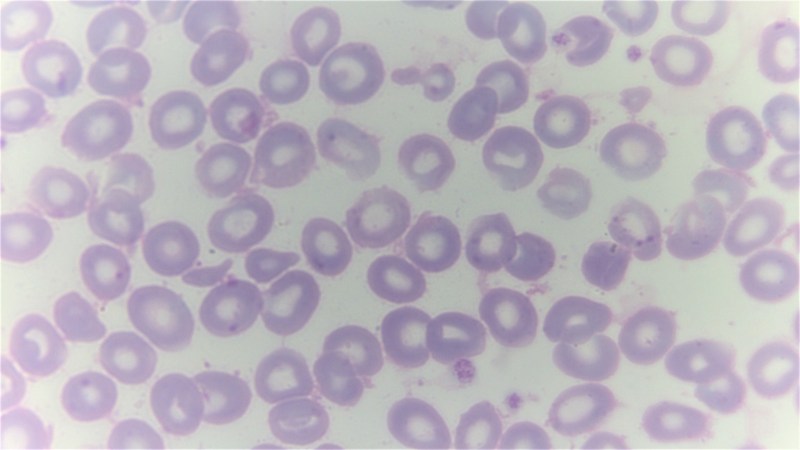Beta thalassemia and sickle cell are two red blood cell disorders which both come with massive health implications and shortened lifespans, but at least for UK-based patients the former may soon be curable with a fairly new CRISPR-Cas9 gene therapy (Casgevy) via the UK’s National Health Service (NHS). Starting with the NHS in England, the therapy will be offered to the approximately 460 β thalassemia patients in that part of the UK at seven different NHS centers within the coming weeks.
We previously covered this therapy and the way that it might offer a one-time treatment to patients to definitely cure their blood disorder. In the case of β thalassemia this is done by turning off the defective adult hemoglobin (HbA) production and instead turning the fetal hemoglobin (HbF) production back on. After eradicating the bone marrow cells with the defective genes, the (externally CRISPR-Cas9 modified) stem cells are reintroduced as with a bone marrow transplant. Since this involves the patient’s own cells, no immune-system suppressing medication is necessary, and eventually the new cells should produce enough HbF to allow the patient to be considered cured.
So far in international trials over 90% of those treated in this manner were still symptom-free, raising the hope that this β thalassemia treatment is indeed a life-long cure.
Top image: A giemsa stained blood smear from a person with beta thalassemia. Note the lack of coloring. (Credit: Dr Graham Beards, Wikimedia Commons)















I want to see them try deleting someone’s entire DNA sequence and replace it with an exact copy taken from a genome sequencing.
I’m curious if it’d fix aging related issues that are due to error accumulation.
Also I’ve heard of some cases of using retroviruses for injecting DNA edits (don’t know all the details and how that integrates with CRISPR) but I’ve heard that that doesn’t always reach all cells. So I’m curious if they could include an altered copy of the replication normally in viruses that replicates only one generation (I.e. first infection causes replication of everything but replication code) to increase the spread.
FWIW a lot of aging related issues are due to errors accumulating in mitochondrial DNA, and we can’t as of yet do anything to change or affect that, in part because there are hundreds of mitochondria per cell, and they have slightly different DNA and transcription/repair mechanisms than our main DNA.
No, because the errors are random and usually when a critical error occurs, the cell dies. It’s not possible to continuously monitor all the important parts of the genome in every stem cell in the organism.
A different cause of aging is telomere shortening:
https://en.wikipedia.org/wiki/Telomere#End_replication_problem
@Maya Posch said: “Potential Cure For All Of England’s Beta Thalassemia Patients Within Reach”
At it’s base, this news of the CRISPR-Cas9 gene therapy in the UK is wonderful; and it likely applies (in large part) to Sickle Cell Disease (SCD) in and around the USA as well.
But, assuming CRISPR-Cas9 gene therapy pans-out (I certainly hope so), there are big questions ahead about the therapy and how it is delivered. (I live in the U.S. but the questions would pretty much apply anywhere in the West).
How much it will cost? Who will pay for it? Who gets it (U.S. Citizens versus non-U.S. Citizens)? How will everyone be affected by the cost? Will my health care coverage be affected because of my skin color, white versus non white?
Note: AFAIK thalassemia is a bit different from sickle cell disease – not a lot, but different enough where it matters. This article seems to try and spell it out. (FYI: I am not a Health Care Professional [IANAHCP]. I am am just a lowly EE):
Thalassemia vs. Sickle Cell Disease: What’s the Difference?
Written by Kelly Elterman, MD | Reviewed by Sophie Vergnaud, MD | Published on May 25, 2022
https://www.goodrx.com/health-topic/hematology/thalassemia-vs-sickle-cell-disease
I live in the USA where we are more familiar with sickle cell disease (SCD). I found this article interesting regarding the scope and ethnicity of SCD in the U.S:
Data and Statistics on Sickle Cell Disease
https://www.cdc.gov/sickle-cell/data/index.html
Key points:
Sickle cell disease (SCD) affects about 100,000 people in the United States; more than 90% are non-Hispanic Black or African American, and an estimated 3%–9% are Hispanic or Latino.
The estimated life expectancy of those with SCD in the United States is more than 20 years shorter than the average expected.
Many people with SCD do not receive the recommended healthcare screenings and treatments.
Add to the pages of “nature can be such a cruel fickle b*tch,” they believe sickle cell anemia persisted as a genetic condition because it helps victims survive malaria.
Well since this is the UK it is offered by the NHS so the NHS pays for it and is accessible to residents of the UK. Socialised health care makes it fairly simple, same situation in most of Europe.
There are still reviews of cost to NHS vs how beta thalassemia affects the life of the patient, cost of not treating it etc. to see if it is on the list of treatments the NHS offers if it fails that then have to go private and pay yourself.